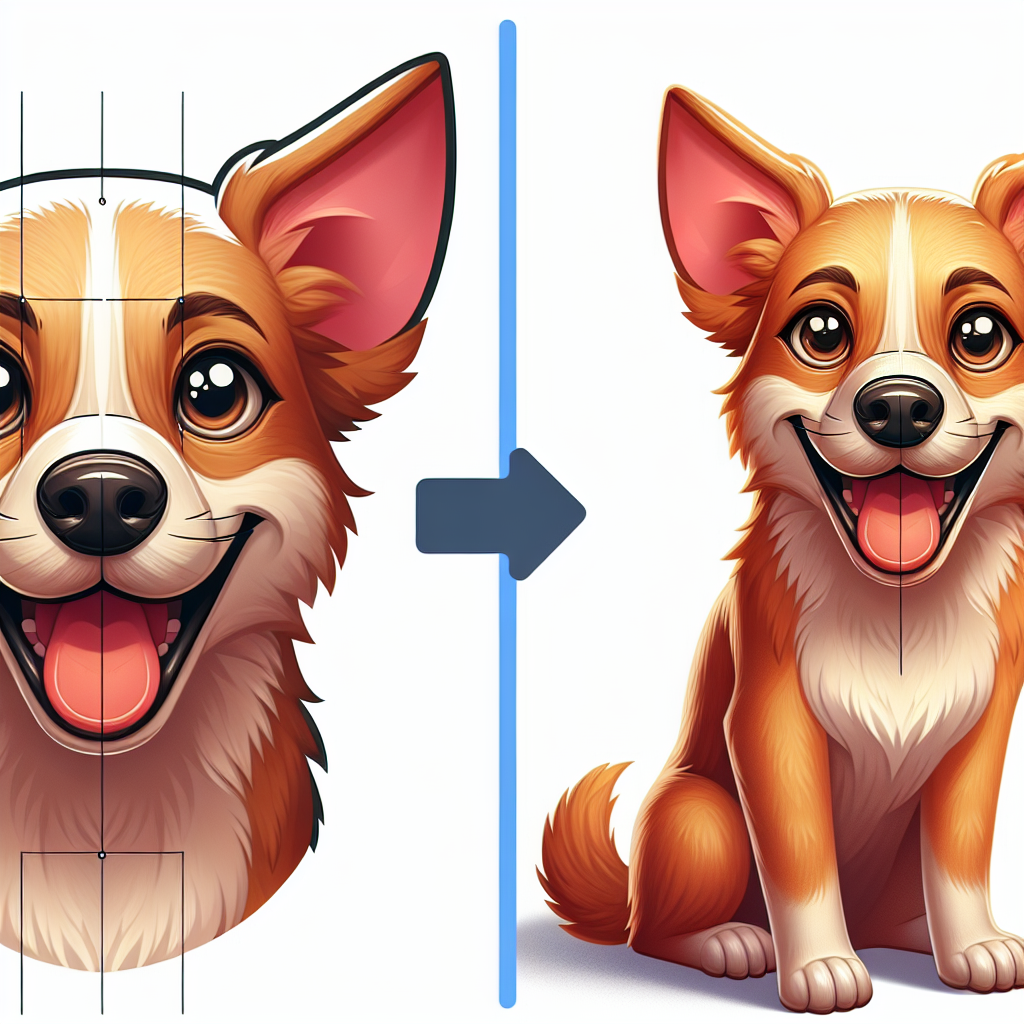Introduction to the Flea Fiasco

Alright, folks, gather ’round. We’re diving into that delightful little circus called the flea infestation. Now, I know what you’re thinking—fleas, really? We’re talking about those tiny, bloodsucking acrobats that can leap great distances and leave you scratching your head—and your skin. The flea problem introduction isn’t just for those with pets. Nope, these little jumpers are equal opportunity invaders. They’re like that uninvited guest at a party who won’t leave.
Why are we talking about getting rid of fleas in your home? Because once these critters move in, they’re harder to get rid of than a bad habit. The trick is flea infestation prevention before they settle down and start sending out change-of-address cards. Stay with me here, ’cause we’re about to embark on a flea-filled journey that’s as itchy as it is enlightening.
Why Fleas Love Our Homes
So, why do fleas infest homes, anyway? It’s like asking why kids love candy. Fleas are all about survival. They’re looking for a good meal and a cozy place to settle down. Your home is like a five-star hotel for them. It’s warm, there’s plenty of food (that’s you and your pets, by the way), and it’s safe from the big, bad outdoors.
These tiny beasts aren’t just hitching a ride on your dog, either. They’ll jump onto anything warm-blooded faster than you can say “pest problem.” They’re not picky—dogs, cats, humans—if it’s got a pulse, it’s good enough for them. They love the carpet, they love the couch, and they especially love your bed. Once they’re in, they’re throwing a flea fiesta, and you’re picking up the tab.
The Sneaky Signs of a Flea Invasion
So, how do you know if you’re hosting this unwanted flea party? Identifying flea signs is like detective work, but less glamorous. You might notice your dog scratching a bit more than usual, or maybe you’ve got a mysterious itch yourself. Flea dirt is a telltale sign—those little black specks that look like pepper sprinkled on your pet’s skin. It’s their droppings. Gross, right?
Then there are the flea bites—a red, itchy reminder that they’re there, sucking your blood like tiny vampires. Here’s a tip: you might see them hopping around if you squint real hard. They’re elusive little buggers, and just when you think you’ve spotted one, it’s gone. It’s like they’re toying with you, daring you to catch them in the act.
Common Mistakes in Flea Control
Now, let’s talk about the blunders—the common flea control mistakes. We’ve all been there, thinking we can outsmart these pests with a quick fix. Spoiler alert: that doesn’t work. Going all out with the flea spray and calling it a day? Rookie mistake. Fleas are like the bad guys in an action movie—just when you think they’re down, they’re back for more.
Not treating your pets regularly? That’s like inviting the fleas to move in permanently. Ignoring the eggs and larvae? Big mistake. They’re the future generation of your flea problem. And vacuuming? You gotta do it like it’s an Olympic sport. Otherwise, you’re just rearranging the fleas’ living room.
Flea control basics are essential, but they’re not the be-all-end-all. You’ve gotta stick to a plan, like a flea-busting commando, ready to take on whatever comes your way.
The First Steps to Flea Freedom
Alright, now for the good stuff—the flea removal first steps. First things first, don’t panic. You’ve got this. Start by treating your pets with a good flea prevention product. They’re the main course for fleas, after all. Next, roll up your sleeves and get to cleaning. Vacuum like your life depends on it because, well, your sanity does.
Wash everything—bedding, toys, clothes. If it can fit in the washing machine, it’s going in. Fleas hate the water, and they hate the dryer even more. They’re like the Wicked Witch of the West—water’s their kryptonite.
Then there’s the flea bomb—or fogger, if you wanna get technical. It’s like setting off a tiny, flea-targeted explosion in your home. But don’t just use one and call it good. Follow the instructions like gospel.
And remember, persistence is key. Fleas are like bad dreams—they come back if you don’t deal with them properly. But you’re not alone in this battle. You’ve got the tools, the knowledge, and the sheer willpower to win.
So there you have it, folks. Getting rid of fleas in your home isn’t a sprint; it’s a marathon. And with a little grit and determination, you’ll cross that finish line flea-free. Thanks for sticking with me through this itchy adventure. You’re one step closer to a flea-free life, and for that, I salute you. Keep fighting the good fight, and may your home be forever flea-free!
Vacuuming: Your Best Friend in the Battle
Alright, picture this: you’re exhausted, eyes blurry from scrutinizing every corner of your home for those tiny, annoying vampires—fleas. You’ve seen enough of them to last a lifetime, right? But now, it’s time to bring out the big guns. Enter the vacuum. It’s not just a household chore anymore; it’s your weapon of choice in this war. How to vacuum fleas effectively? That’s the million-dollar question, and the answer is simple—consistency and thoroughness. Every pass of the vacuum feels like a victory lap, capturing those little jumpers and their eggs like a boss. You’ll find yourself feeling oddly satisfied as the vacuum roars to life, sucking up the unwanted guests.
Forget about fancy gadgets. This is about the simple power of a vacuum cleaner. Move everything—furniture, rugs, that pile of laundry you’ve been ignoring—all to uncover every hiding spot. It’s like a treasure hunt, but with way less fun and way more grit. The key is persistence and a little elbow grease. So, let that vacuum be your cavalry, charging into battle. Who knew cleaning could feel this triumphant?
The Power of Baking Soda and Salt
Now, let’s talk about the magic duo—baking soda and salt. Bet you didn’t expect your kitchen to be the arsenal, did you? These humble staples transform into tiny soldiers on a mission. Using baking soda for fleas is like sprinkling fairy dust. Mix it with salt, and you’ve got yourself a flea-fighting cocktail. The best part? It won’t cost you an arm and a leg.
So, here’s what you do—sprinkle it all over carpets, rugs, and any fabric that seems like a flea hotspot. Let it sit for a few hours, maybe even overnight if you’re feeling patient. What’s happening here is a bit of magic and science. The combo dehydrates fleas and their eggs, turning them into dust—which you can vacuum up with glee. The beauty of this method is its simplicity. No harsh chemicals, no big expenses—just a little time and patience.
Steam Cleaning: Turning Up the Heat
Alright, if you’re ready to up the ante, let’s talk about steam cleaning for flea removal. This is where things get serious—like bringing in the big guns. You might even feel like a superhero with a steam cleaner in hand. It’s all about the heat—fleas can’t handle it. The steam penetrates deep into carpets and fabric, wiping out fleas and their eggs. You’ll feel a bit like James Bond, with the steam cleaner as your gadget of choice.
Sure, it’s a bit more effort than just vacuuming, but oh boy, does it pay off. It’s like dropping a bomb on their tiny hideouts. The heat does what it needs to do, and you’re left with peace of mind. There’s something immensely satisfying about watching that steam rise, knowing you’re turning up the heat on these unwanted guests. It’s an investment of time, but once you see the results, you won’t look back.
Natural Remedies: A Homegrown Approach
Not everyone wants to go all industrial on their floors, and hey, I get it. Sometimes, you want to keep things mellow. That’s where natural flea remedies for homes come in. Think of it as a gentle lullaby for fleas, convincing them to pack their bags and leave. It’s not exactly a love song, but it gets the job done.
There are plenty of homegrown solutions to try. Essential oils like lavender and cedarwood are popular—fleas hate them. Mix a few drops with water and spray around your home. It’s like aromatherapy for you and a nightmare for them. Then there’s the old trick of using lemon juice as a flea deterrent. It’s simple, it’s natural, and best of all, it’s cheap.
The beauty of natural remedies is the peace of mind they bring. No chemicals, no worries—just a bit of nature’s goodness working in your favor. It’s all about finding what works for you and running with it. Because, in the end, getting rid of fleas in your home is about finding your groove and sticking to it.
Keeping Them Gone: The Aftermath
Now, let’s get to the aftermath—keeping those tiny vampires from making a comeback. You’ve been through the battle, and now it’s about staying vigilant. Preventing fleas after treatment is key to keeping your home flea-free. It’s all about a few tricks up your sleeve and a bit of vigilance.
Remember that vacuum? Keep it handy. Regular vacuuming is your best bet to ensure they don’t return. Wash your pet’s bedding often, and keep an eye out for any signs of a comeback. Flea control tips and tricks are your arsenal now. It’s about staying one step ahead, and you’ve already shown you can do it.
How to keep fleas away? That’s a dance you’ll learn with time. It’s about persistence and a bit of grit. You’ve got this, and your home will thank you. Cheers to a flea-free life! Here’s to the peace and quiet you’ve earned. Pat yourself on the back, take a deep breath, and enjoy that sweet, sweet victory. Thanks for sticking with it—your home is your haven once more.
Dealing with Flea Eggs and Larvae: The Sneaky Culprits
Oh, fleas. Just saying the word makes you wanna scratch, right? They’re these tiny ninjas of annoyance, stealthily hopping onto your pets and into your home. But here’s the kicker—it’s not just the adult fleas you gotta worry about. Nope, it’s their offspring—the flea eggs and larvae—that really sneak up on you. These little guys are like the silent film villains of the flea world. You don’t notice them until they’ve made themselves cozy in your carpets and cracks. Getting rid of fleas means tackling these sneaky culprits head-on.
Flea egg removal is a task that requires patience, maybe even a little grit. Imagine them hiding out in your plush carpets, just waiting to hatch into full-grown nuisances. Vacuuming becomes your new best friend—aim for those cozy corners and under furniture spots where the little critters love to hang. It’s not glamorous work, but hey, neither is finding a flea on your favorite couch. Flea eggs, they’re like the glitter of the pest world—once they’re there, they’re hard to shake off.
Natural Remedies: When You Want to Skip the Chemicals
Now, if you’re like me, the idea of blasting your home with harsh chemicals might not sit right. Maybe you’re a nature lover or just trying to keep things chill and zen. Either way, natural flea remedies for home are your ticket. Grab some essential oils like lavender or peppermint—fleas hate the stuff. And diatomaceous earth? It’s like the kryptonite for fleas, drying them out and keeping them at bay. Just sprinkle it around and let it work its magic.
And I know, I know, it sounds too good to be true—like one of those late-night infomercials. But sometimes, nature’s got your back. Trust me, I’ve been around the block with this. Natural flea prevention can be as simple as a little salt around the baseboards. It’s all about finding what works for you and sticking with it. And maybe throw in a prayer or two for good measure.
The Cost of Getting Rid of Fleas: Is It Worth It?
Ah, the million-dollar question—or maybe not quite a million, but you get the idea. What’s this whole flea-fighting endeavor gonna cost you? Well, it’s a mixed bag. If you’re a DIY enthusiast, you might spend a few bucks on supplies. A bag of diatomaceous earth here, a bottle of essential oil there. It adds up, but it’s manageable.
But then there’s the other side of the coin—calling in the pros. Professional extermination isn’t cheap, and your wallet might feel the pinch. But think about it—what’s peace of mind worth? Sometimes, the cost of flea extermination is just the price of keeping your sanity. We all want to kick back in a flea-free home, maybe with a cold drink in hand, not worrying about those little jumpers.
How to Prevent Fleas from Returning: Keep ‘Em Gone
So you’ve done the work, kicked the fleas out, and now you’re staring at a clean slate. But the real trick isn’t just getting rid of fleas—it’s keeping them from coming back. Prevention is the name of the game here, folks. Regular cleaning, vigilant pet care, and maybe a little salt around the baseboards can do wonders.
Think of it like a game of chess. You’re always planning your next move. Keep up with the vacuuming, wash your pet’s bedding regularly, and stay vigilant. Prevent fleas from returning by being one step ahead—you gotta outsmart these little pests. It’s like being in a constant state of readiness, but you’re protecting your turf, your peace of mind.
Your Flea-Free Home: Celebrate and Maintain the Peace
Once you’ve got a flea-free home, take a moment to savor it. No more scratching, no more tiny invaders. It’s like the end of a long, drawn-out battle, and you’ve come out on top. You’ve earned it. Breathe it in—no more jumping critters, just peace.
But don’t get too comfortable. Maintaining that peace takes work. It’s about vigilance and sticking to those home flea control methods you’ve found. Keep up the good work, and those fleas will think twice before trying to crash your pad again.
Thanks for sticking with me through this flea-filled journey. Here’s to a peaceful, itch-free home! You’ve got this.
Quick Takeaways:
Ah, fleas. They’re the uninvited guests that overstay their welcome. But hey, it’s not all doom and gloom. Getting rid of fleas in your home takes a bit of elbow grease and some good old-fashioned know-how. First things first, you’ll want to identify flea signs like those tiny black specs—flea dirt—on your pet or in your home. Once you spot them, it’s game on.
Vacuuming is your new best friend. It’s like a dance—smooth and methodical. Hit those carpets, cracks, and corners like you mean it. Then there’s baking soda and salt, the dynamic duo for flea egg removal. Sprinkle them around, let them sit, and vacuum again. If you’re feeling fancy, bring out the steam cleaner. Fleas hate the heat, and you’ll feel like a hero watching them disappear.
But don’t stop there. Natural flea remedies for homes are your allies. Essential oils and diatomaceous earth are gentle yet effective. And let’s not forget the aftermath. Preventing fleas after treatment is crucial. Regular cleaning and a watchful eye on your pets keep those critters at bay.
Remember, it’s not just about getting rid of fleas in your home—it’s about keeping them away for good. Stay vigilant and keep those tricks up your sleeve. You’ve got this. Your home will thank you. Cheers to a flea-free life!
FAQs:
1.
How do fleas infest homes in the first place?
Fleas have a knack for hitching a ride—usually on your pets. Once inside, they make themselves comfortable in carpets, pet bedding, and even furniture. They lay eggs that hatch into larvae, creating a cycle that’s tough to break without proper flea removal first steps. Keeping an eye on your pets and regular cleaning are key to flea infestation prevention.
2.
What are common flea control mistakes people make?
One big oops is thinking a single treatment is enough. Fleas are tricky and often require multiple rounds of treatment. Another mistake? Ignoring the yard. Fleas love hiding out there, ready to jump back on your pets. Always treat both your home and yard to keep fleas away. And don’t forget—identifying flea signs early can save you a lot of hassle.
3.
Can natural flea remedies for homes really work?
Absolutely! Natural flea remedies like essential oils, diatomaceous earth, and vinegar sprays can be effective. They might require a bit more patience and persistence, but they’re a great option for those who prefer to avoid chemicals. Just remember to test any remedy on a small area first to ensure your pet and home tolerate it well.
4.
How can I prevent fleas from returning after treatment?
Vigilance is your best friend here. Regular vacuuming, washing pet bedding, and keeping your pets treated with flea prevention products are crucial. Also, consider using natural flea prevention methods like planting flea-repellent herbs around your home. Staying one step ahead is key to a flea-free home.
5.
What are the costs associated with flea extermination?
The cost of flea extermination can vary. DIY methods are often cost-effective, using items you might already have at home. Professional extermination services can be more expensive, ranging from $100 to $300, depending on the severity of the infestation and the size of your home. Weighing the cost against the peace of mind is a personal choice.
Conclusion:
So, that’s the scoop on how to get rid of fleas in your home. It’s a journey, no doubt, but one worth taking. Starting with flea removal first steps, like vacuuming and using baking soda, sets the stage. Then, it’s all about layering your defenses—natural remedies, steam cleaning, and regular maintenance. And let’s not overlook the importance of preventing fleas after treatment. Keep your eyes peeled and your vacuum ready.
In this battle, you’re not alone. Many have fought the good fight and come out victorious. Your home is your sanctuary, and you deserve it to be flea-free. Stay the course, keep those tricks up your sleeve, and soon enough, you’ll be waving goodbye to those tiny invaders for good.
Thanks for sticking with me on this journey. I’m rooting for you. Here’s to a peaceful, itch-free home, where you can finally relax without those pesky fleas bothering you. Cheers, and good luck!
References:
1. https://www.epa.gov/pets/controlling-fleas-and-ticks-around-your-home
2. https://www.health.harvard.edu/staying-healthy/how-to-get-rid-of-fleas-protecting-your-home-and-pets
3. https://www.webmd.com/pets/kill-fleas-at-home
4. https://www.healthline.com/health/healthy-home-guide/how-to-get-rid-of-fleas
5. https://www.marthastewart.com/how-to-get-rid-of-fleas-in-the-house-fast-11716197
Our solution eradicates fleas on contact without harmful chemicals, ensuring a safe environment for your pets and family. Easy to use and highly effective, SayByeBugs helps you maintain a flea-free home. Learn more and order today at SayByeBugs.com
Our solution eradicates fleas on contact without harmful chemicals, ensuring a safe environment for your pets and family. Easy to use and highly effective, SayByeBugs helps you maintain a flea-free home. Learn more and order today at SayByeBugs.com







